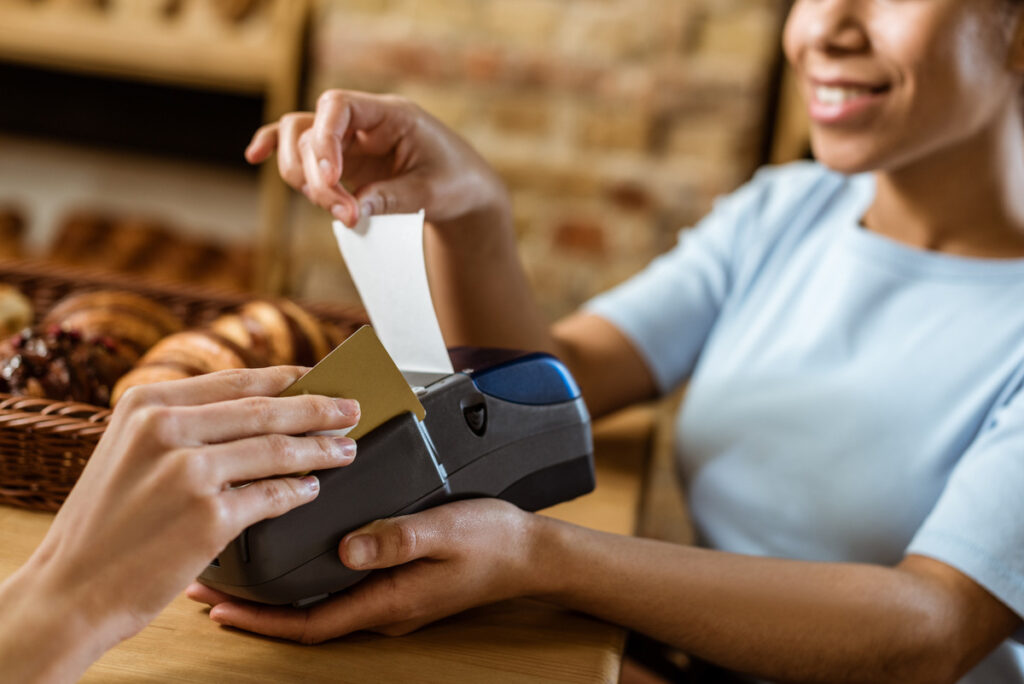
February 29, 2024
Payment acceptance rate: An updated guide for 2025
- What is the meaning of payment acceptance?
- What is the acceptance rate of a transaction?
- What is a payment acceptance fee?
- What is payment success rate?
- Why is a payment acceptance rate important?
- What can influence payment acceptance rates?
- Enhancing your payment experience
- Increasing payment acceptance rate
- What is the average failure rate of payments?
- What is the average payment value?
- Ready to transform your payment experience?
As businesses delve deeper into the evolving digital marketplace, the ability to seamlessly manage and process payments becomes a cornerstone of success. In an era where online shopping and digital services are becoming the norm, understanding the detailed mechanics behind payment transactions is not just beneficial—it’s imperative for any entity seeking to thrive and expand.
Among the various metrics and terms that surface in discussions about payment processing, the payment acceptance rate stands out as a critical indicator of operational efficiency and customer satisfaction.
This guide is designed to unpack the complexities surrounding this vital metric, shedding light on its importance, the factors that influence it, and practical steps businesses can take to enhance their payment acceptance rates as we move forward into 2025. By equipping yourself with this knowledge, you position your business at the forefront of payment processing efficiency, ready to navigate the challenges and opportunities of the digital commerce landscape with confidence.
What is the meaning of payment acceptance?
Payment acceptance is a term that encapsulates the ability of a business to receive payments through various channels and methods from its customers. This concept goes beyond merely having the technical setup to process payments. It involves a complex ecosystem that ensures these payments are processed efficiently, securely, and reliably. High payment acceptance means that a business can offer a wide range of payment options — from traditional credit and debit cards to e-wallets and bank transfers — and handle each transaction smoothly, without hitches.
This capability is crucial in today’s market, where consumer preferences for payment methods vary widely, and the expectation for a seamless shopping experience is higher than ever. A robust payment acceptance strategy ensures that customers can pay how they want, when they want, enhancing their overall satisfaction and loyalty to your brand.
What is the acceptance rate of a transaction?
The acceptance rate of a transaction dives deeper into the analytics of payment processing, serving as a critical measure of a business’s payment system efficiency. It specifically looks at the proportion of attempted transactions that are successfully authorized and completed. This metric shines a light on the operational health of your payment processes, pinpointing how often customers face no issues like transaction declines or errors during checkout. A high transaction acceptance rate indicates a frictionless payment process, suggesting that most customers can purchase without encountering preventable obstacles. It’s a direct reflection of the effectiveness of your payment strategy, including selecting payment gateways, integrating fraud detection measures, and compatibility with preferred customer payment methods.
What is a payment acceptance fee?
When we talk about a payment acceptance fee, we refer to the costs businesses incur to process customer payments. These fees can vary significantly based on several factors, including the type of payment method, the payment gateway or processor used, and the specific terms of service agreed upon with financial institutions. Typically, these fees include a per-transaction charge, a percentage of the transaction value, and sometimes additional fixed costs for gateway or merchant account services.
For businesses, understanding and managing these fees is crucial to maintaining profitability. It requires a careful balance between offering various payment options to meet customer needs and managing the costs associated with each option. Effective management of payment acceptance fees involves negotiating better rates, choosing the right mix of payment services, and continuously monitoring fee structures for any changes that could impact your bottom line.

What is payment success rate?
Closely intertwined with the concept of payment approval rate, the payment success rate zeroes in on the effectiveness of your payment process from start to finish. It reflects the percentage of transactions that are approved and successfully processed to completion without any failures. This rate is pivotal for businesses because it directly impacts the customer experience and, by extension, customer retention and revenue.
A high payment success rate means that your payment infrastructure is not only robust but also capable of handling transactions smoothly, thereby minimizing disruptions in cash flow and building trust with your customers. Achieving a high payment success rate requires a multifaceted approach, including ensuring your payment systems are up to date, integrating advanced fraud protection measures, and providing clear communication with customers about payment processes and expectations.
Why is a payment acceptance rate important?
A high payment acceptance rate is crucial for several reasons. It ensures customers can complete their purchases without frustration, leading to higher satisfaction and loyalty. Furthermore, it directly impacts a business’s bottom line, as higher acceptance rates mean more successful transactions and revenue.
What can influence payment acceptance rates?
Several factors can influence payment acceptance rates, including the type of payment method used, the customer’s bank policies, the security measures in place, and even the geographic location of the transaction. Understanding these factors can help businesses identify areas for improvement in their payment processes.
Enhancing your payment experience
Improving the payment experience for your customers involves a multifaceted approach that simplifies transactions and secures them. Here’s how:
- Diversify payment options: Customers appreciate flexibility. Including a variety of payment methods, from credit and debit cards to digital wallets and even cryptocurrencies, can cater to a broader audience.
- Reliable payment gateway: The backbone of your online transactions, a reliable payment gateway, ensures smooth and secure transactions. Look for providers known for uptime and robust security measures.
- Checkout process optimization: Simplify the checkout process to reduce cart abandonment. This includes minimizing the number of steps to complete a purchase, offering guest checkout options, and clearly displaying all costs upfront.
- Mobile optimization: With the increasing prevalence of smartphones, ensure your payment system is optimized for mobile devices. A mobile-friendly payment process can significantly enhance the customer experience.
- Security and compliance: Adhering to security standards like PCI DSS ensures that your transactions are secure, building trust with your customers. Implementing SSL certificates and using encryption for data protection are also crucial.
- Personalization: Tailoring the payment experience to individual preferences can increase satisfaction. Using data analytics to understand customer behavior and preferences can help in offering personalized payment solutions.
Increasing payment acceptance rate
A higher payment acceptance rate translates to fewer lost sales and happier customers. Here’s how you can work towards increasing this rate:
- Analyze payment data: Regularly review your transaction data to identify patterns or recurring issues that lead to declines. This could be specific to payment methods, regions, or even times of day.
- Fraud detection tools: Implement advanced fraud detection and prevention tools that can intelligently assess the risk of transactions without unnecessarily declining legitimate purchases.
- Optimize for mobile payments: Given the shift towards mobile commerce, ensure your payment system is fully optimized for mobile transactions. This includes responsive design and support for mobile payment methods.
- Work with reliable payment processors: Partner with payment processors that have a track record of high acceptance rates. They can offer valuable insights and technology to improve your acceptance rates.
- Address technical issues: Regularly update your payment systems and fix any bugs or technical issues that could interfere with payment processing. Ensure that your site’s loading time is optimized, as delays can lead to abandoned transactions.
- Educate your customers: Sometimes, payments fail due to customer errors. Clear instructions and support can help mitigate these issues. Consider implementing real-time feedback for incorrect field entries during payment.
- Negotiate with banks and processors: Building strong relationships with your banks and payment processors can be beneficial. They can provide insights into why certain transactions are declined and work with you to improve acceptance rates.
Focusing on these areas can significantly improve your payment experience and increase your acceptance rate. Remember, the goal is to make transactions as seamless and secure as possible for your customers, encouraging repeat business and fostering a positive reputation for your brand in the competitive digital marketplace.
What is the average failure rate of payments?
The average failure rate of payments can vary widely depending on the industry, market, and types of payment methods used. However, understanding this metric can help businesses benchmark their performance and identify areas for improvement.
What is the average payment value?
The average payment value refers to the average amount of money processed per transaction. This metric can provide insights into consumer spending habits and help businesses tailor their offerings and payment processes to better suit their customer base.
Ready to transform your payment experience?
Optimizing your payment strategy in today’s competitive marketplace is not just an option; it’s a necessity. Gr4vy offers a transformative approach to payment processing, enabling businesses to secure better pricing through least-cost routing and ensuring platform reliability. This innovative platform empowers you to not only optimize pricing on a transaction level but also significantly increase approval rates. By choosing Gr4vy, you’re not just selecting a payment processor; you’re embracing a partner dedicated to enhancing your payment efficiency and cost-effectiveness.
Gr4vy stands out by offering unparalleled flexibility in payment processing. Accepting multiple payment methods and working with a variety of payment providers becomes seamless, allowing you to design your own workflows tailored to your business’s unique needs. This capability ensures that each transaction is optimized for success and aligned with your strategic goals. With Gr4vy, the power to revolutionize your payment processes is at your fingertips, offering an unmatched level of control and customization.
Leap redefining your payment strategy with Gr4vy. Whether you aim to improve your payment acceptance rates, reduce processing costs, or enhance the overall payment experience, Gr4vy is here to guide you every step. Contact Gr4vy today to explore how we can support your journey towards a more efficient, reliable, and cost-effective payment process. Your opportunity to transform your payment strategy starts now.